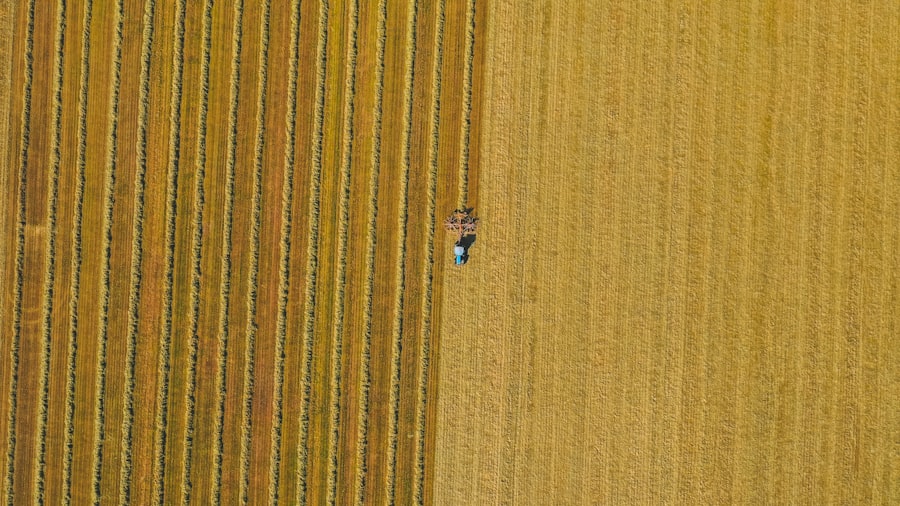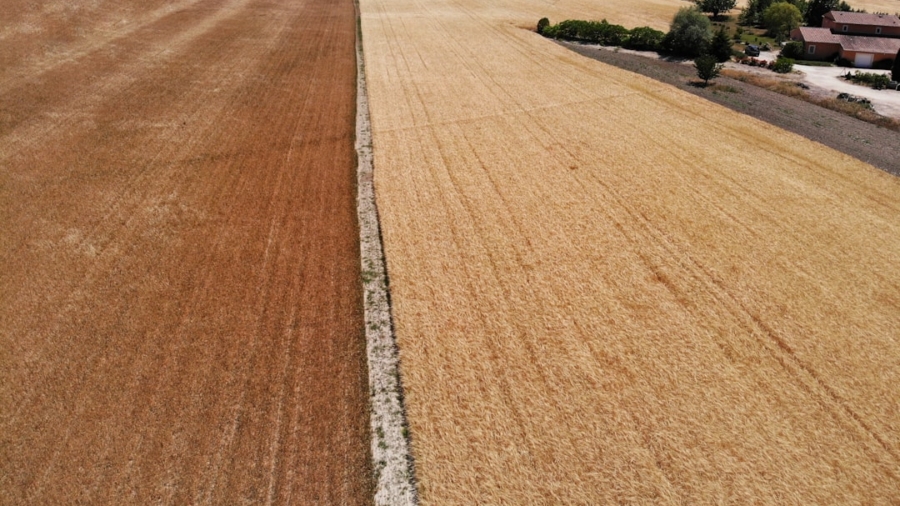The agricultural sector is undergoing a transformative shift, driven by the need for sustainability and efficiency in food production. Smart farming, an innovative approach that integrates advanced technologies into agricultural practices, is at the forefront of this evolution. This paradigm shift is not merely about increasing yields; it encompasses a holistic view of farming that prioritizes environmental stewardship, resource conservation, and economic viability.
As the global population continues to rise, the demand for food is expected to increase significantly, necessitating a reevaluation of traditional farming methods. Smart farming leverages data-driven insights and automation to optimize agricultural processes, thereby promoting sustainability. At the heart of smart farming lies the integration of smart sensors, which play a pivotal role in collecting real-time data from the field.
By harnessing this data, farmers can make informed decisions that enhance productivity while minimizing waste and environmental impact. The concept of sustainability in smart farming extends beyond mere resource management; it also involves fostering biodiversity, improving soil health, and reducing carbon footprints.
As we delve deeper into the various facets of smart sensors in agriculture, it becomes evident that they are not just tools but essential components of a sustainable agricultural ecosystem.
Key Takeaways
- Smart farming sustainability integrates technology to improve agricultural practices and reduce environmental impact.
- Smart sensors play a crucial role in agriculture by providing real-time data on soil moisture, temperature, and other important factors.
- Smart sensors help farmers optimize crop management by enabling precise irrigation, fertilization, and pest control.
- In livestock monitoring, smart sensors track animal health, behavior, and location, leading to better care and management.
- Smart sensors contribute to water conservation in agriculture by enabling efficient irrigation and reducing water wastage.
The Importance of Smart Sensors in Agriculture
Smart sensors are revolutionizing the agricultural landscape by providing farmers with unprecedented access to critical information about their crops and livestock. These devices can be deployed across various agricultural settings, from large-scale farms to smallholdings, enabling farmers to monitor conditions in real-time. The importance of smart sensors lies in their ability to collect and analyze data that was previously difficult or impossible to obtain.
For instance, soil sensors can measure nutrient levels and pH balance, allowing farmers to tailor their fertilization strategies more effectively. This precision not only enhances crop yields but also reduces the risk of over-fertilization, which can lead to soil degradation and water pollution. Moreover, smart sensors facilitate proactive decision-making by alerting farmers to potential issues before they escalate into significant problems.
For example, temperature and humidity sensors can detect conditions conducive to pest infestations or diseases, enabling timely interventions that can save entire harvests. The integration of these sensors into farming practices also supports the concept of precision agriculture, where inputs such as water, fertilizers, and pesticides are applied in exact amounts based on real-time data rather than generalized estimates. This targeted approach not only maximizes efficiency but also aligns with sustainable practices by minimizing waste and environmental impact.
How Smart Sensors Improve Crop Management

The application of smart sensors in crop management has transformed how farmers approach cultivation. By providing detailed insights into soil conditions and plant health, these sensors enable farmers to implement more effective management strategies. For instance, moisture sensors placed in the soil can provide real-time data on moisture levels, allowing farmers to optimize irrigation schedules.
This not only conserves water but also ensures that crops receive the right amount of hydration at critical growth stages. In regions where water scarcity is a pressing issue, such precision irrigation can make a significant difference in crop viability. Additionally, smart sensors can monitor crop health through various means, including spectral imaging and chlorophyll sensors.
These technologies allow farmers to assess plant vigor and detect early signs of stress or disease. For example, multispectral cameras can capture images that reveal variations in plant health across a field, enabling targeted interventions such as localized fertilization or pest control. By adopting these data-driven approaches, farmers can enhance their crop management practices significantly, leading to improved yields and reduced reliance on chemical inputs.
The Role of Smart Sensors in Livestock Monitoring
In addition to crop management, smart sensors play a crucial role in livestock monitoring, enhancing animal welfare and farm productivity. Wearable sensors and RFID tags are increasingly being used to track the health and behavior of livestock in real-time. These devices can monitor vital signs such as heart rate and body temperature, providing early warnings of potential health issues.
This proactive approach not only improves animal welfare but also reduces economic losses associated with disease outbreaks. Furthermore, smart sensors can help optimize feeding practices by monitoring the nutritional intake of livestock.
By analyzing data on feed consumption and weight gain, farmers can adjust feeding regimens to ensure that animals receive balanced nutrition tailored to their specific needs. This level of precision not only enhances livestock productivity but also contributes to sustainability by minimizing feed waste and reducing the environmental impact associated with livestock farming. As the demand for animal products continues to rise globally, the integration of smart sensors into livestock management will be essential for meeting these challenges sustainably.
Smart Sensors and Water Conservation in Agriculture
Water conservation is one of the most pressing challenges facing modern agriculture, particularly in regions prone to drought or water scarcity. Smart sensors are instrumental in addressing this issue by enabling precise water management practices that optimize irrigation efficiency. Soil moisture sensors provide real-time data on moisture levels at various depths, allowing farmers to determine when and how much to irrigate their crops.
This targeted approach reduces water waste and ensures that crops receive adequate hydration without over-irrigation. Moreover, advanced irrigation systems equipped with smart sensors can automate watering schedules based on weather forecasts and soil conditions. For example, if rain is predicted within a few days, the system can delay irrigation to conserve water resources.
This integration of technology not only enhances water conservation efforts but also contributes to cost savings for farmers who rely on irrigation for their crops. As climate change continues to exacerbate water scarcity issues worldwide, the role of smart sensors in promoting efficient water use will become increasingly vital for sustainable agriculture.
The Impact of Smart Sensors on Precision Agriculture

Precision agriculture represents a paradigm shift in farming practices, emphasizing data-driven decision-making to enhance productivity while minimizing environmental impact. Smart sensors are at the core of this movement, providing farmers with actionable insights that enable them to optimize every aspect of their operations. By collecting data on soil conditions, weather patterns, and crop health, these sensors empower farmers to make informed decisions about planting schedules, fertilization rates, and pest control measures.
The impact of smart sensors on precision agriculture is profound. For instance, variable rate technology (VRT) allows farmers to apply fertilizers and pesticides at different rates across a field based on sensor data. This targeted application not only maximizes crop yields but also reduces chemical runoff into nearby waterways—a significant environmental concern associated with traditional farming practices.
Additionally, the ability to monitor crop performance in real-time enables farmers to adapt their strategies quickly in response to changing conditions, ensuring that they remain competitive in an increasingly challenging agricultural landscape.
Challenges and Opportunities in Implementing Smart Sensors in Farming
While the benefits of smart sensors in agriculture are clear, several challenges must be addressed for widespread adoption. One significant barrier is the initial cost associated with purchasing and installing these technologies. Many smallholder farmers may find it difficult to invest in advanced sensor systems due to limited financial resources or access to credit.
Additionally, there may be a lack of technical expertise among farmers regarding how to effectively utilize these technologies for maximum benefit. Despite these challenges, there are numerous opportunities for growth in this sector. Governments and agricultural organizations are increasingly recognizing the importance of supporting farmers in adopting smart technologies through subsidies or training programs.
Furthermore, advancements in sensor technology are leading to more affordable solutions that can be accessible even to smaller farms. As awareness grows about the long-term benefits of smart farming practices—such as increased efficiency and sustainability—more farmers may be encouraged to embrace these innovations.
The Future of Smart Sensors in Sustainable Farming
Looking ahead, the future of smart sensors in sustainable farming appears promising as technology continues to evolve rapidly. Innovations such as artificial intelligence (AI) and machine learning are being integrated with sensor data analysis to provide even deeper insights into agricultural practices. For example, AI algorithms can analyze historical data alongside real-time sensor inputs to predict crop yields more accurately or identify optimal planting times based on weather patterns.
Moreover, as global concerns about food security and environmental sustainability intensify, there will likely be increased investment in research and development focused on smart farming technologies. Collaborative efforts between tech companies and agricultural stakeholders will drive innovation forward while ensuring that solutions are tailored to meet the unique needs of diverse farming systems worldwide. Ultimately, the integration of smart sensors into sustainable farming practices holds the potential not only to enhance productivity but also to create a more resilient agricultural sector capable of meeting future challenges head-on.
In a related article from enicomp.com, the importance of utilizing the best software for project management is discussed. This article highlights how choosing the right software can streamline processes, increase efficiency, and ultimately lead to successful project outcomes. By implementing the best software for project management, organizations can improve collaboration, communication, and overall productivity within their teams.
FAQs
What are smart sensors in the context of smart farming sustainability?
Smart sensors are electronic devices that are capable of monitoring and collecting data on various environmental and agricultural parameters such as temperature, humidity, soil moisture, and crop health. These sensors are a key component of smart farming systems, providing real-time data that can be used to optimize agricultural practices and improve sustainability.
How do smart sensors contribute to sustainability in smart farming?
Smart sensors enable farmers to make data-driven decisions, leading to more efficient use of resources such as water, fertilizers, and pesticides. By providing real-time information on crop conditions and environmental factors, smart sensors help farmers to minimize waste, reduce environmental impact, and improve overall sustainability in agriculture.
What are the benefits of using smart sensors in smart farming?
Some of the benefits of using smart sensors in smart farming include improved crop yields, reduced resource usage, lower operational costs, and better environmental stewardship. Smart sensors also enable precision agriculture techniques, allowing farmers to tailor their practices to specific areas of their fields based on real-time data.
How do smart sensors improve decision-making in smart farming?
Smart sensors provide farmers with accurate and timely information about their crops and the surrounding environment. This data can be used to make informed decisions about irrigation, fertilization, pest control, and other aspects of agricultural management, leading to more sustainable and productive farming practices.
What are some examples of smart sensors used in smart farming?
Examples of smart sensors used in smart farming include soil moisture sensors, weather stations, crop health monitoring devices, and livestock tracking systems. These sensors can be deployed across agricultural fields to gather data that is essential for making informed decisions and optimizing farming practices.

